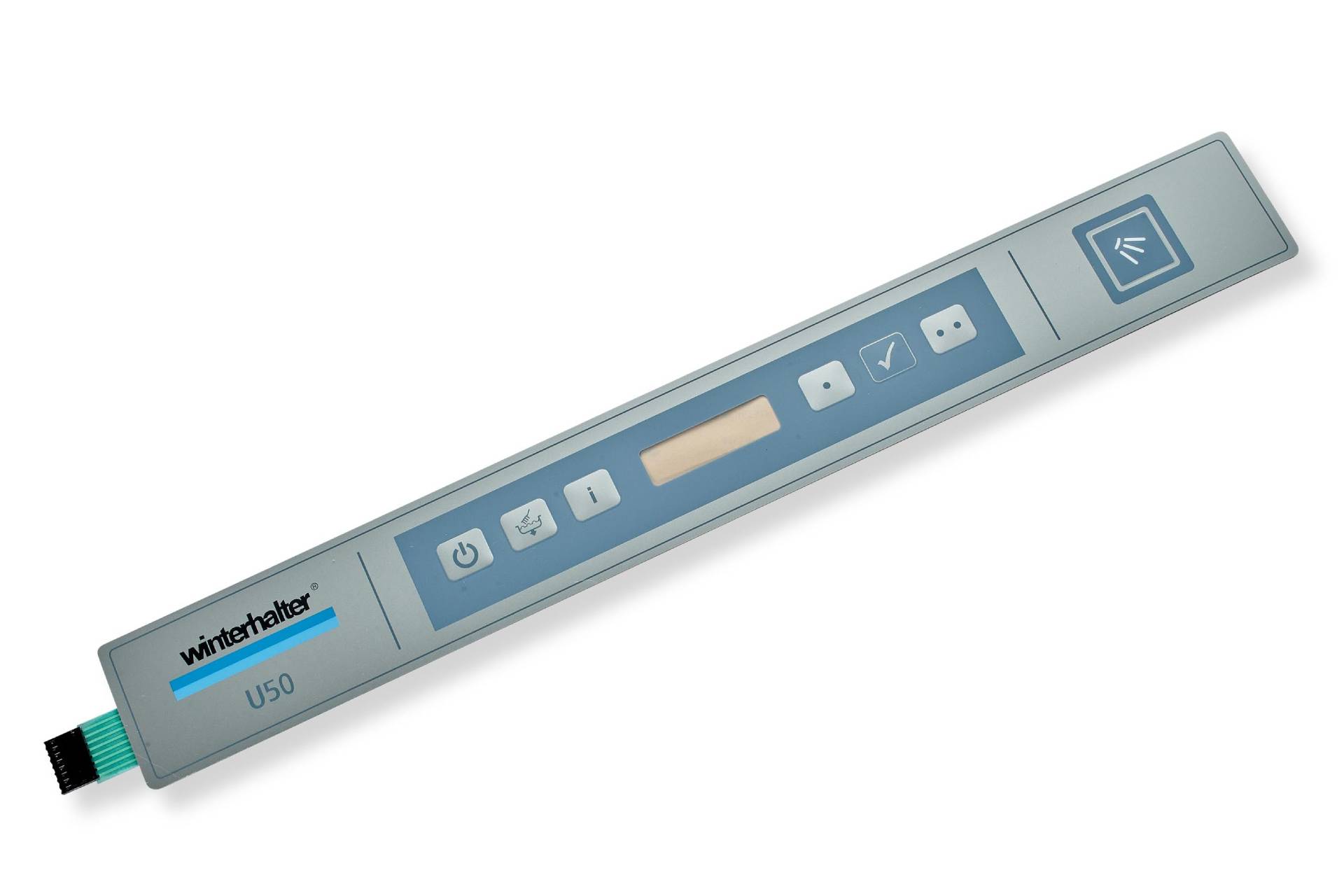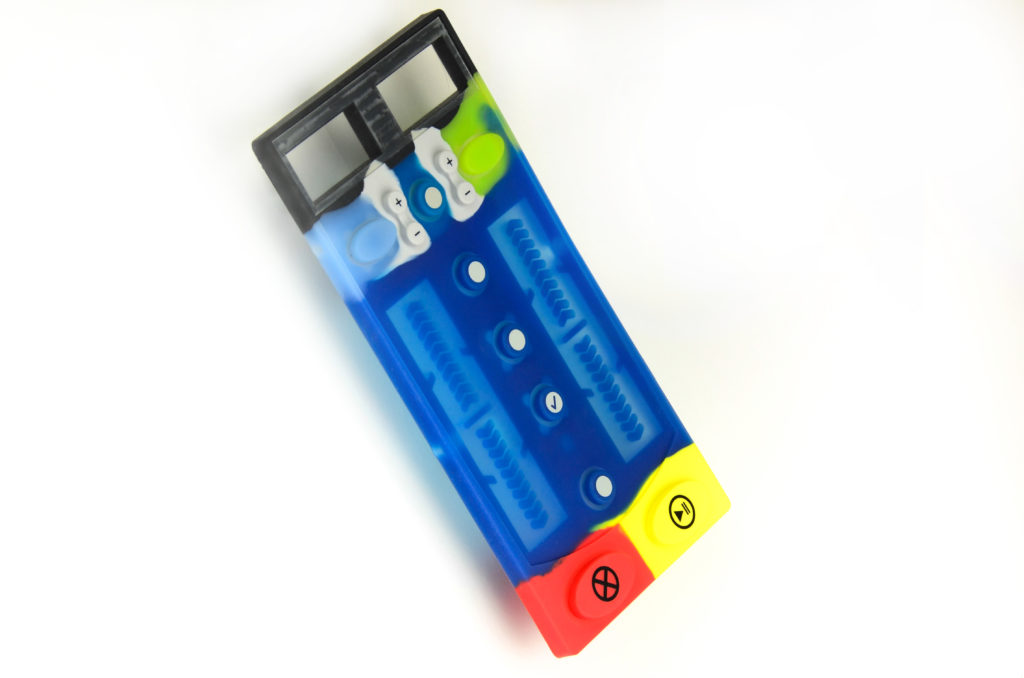Checking Out the Manufacturing Process Behind Rubber Keypads and Their Value in Modern Tools
Rubber keypads are crucial in the performance of modern devices. Their manufacturing procedure includes cautious selection of products and accurate strategies. Keypads are developed to improve user interaction while making sure toughness and dependability. Recognizing how these components are made discloses their relevance across different applications. What elements add to their performance, and just how do these components affect customer experience? The answers might reshape perceptions of this daily technology.
Review of Rubber Keypads and Their Applications

Rubber keypads are flexible parts extensively utilized in different digital gadgets, varying from customer electronics to commercial tools. Their design permits a tactile reaction, making them an excellent selection for applications calling for individual interaction. Typically found in products such as push-button controls, calculators, and clinical tools, rubber keypads facilitate ease of usage and access.
In industrial settings, they serve critical features in equipment and control board, where toughness and resistance to environmental elements are important. The non-slip surface area boosts hold, advertising integrity in demanding conditions. In addition, their light-weight nature and personalized shapes allow manufacturers to produce tailored solutions that fit certain demands. With improvements in technology, rubber keypads proceed to evolve, integrating attributes like backlighting and improved level of sensitivity. In general, their adaptability and useful advantages contribute substantially to the effectiveness of different gadgets across multiple markets.
Materials Made Use Of in Rubber Keypad Production
Keypad producing relies upon an option of products that enhance both performance and sturdiness. The primary material utilized in the production of rubber keypads is silicone rubber, understood for its superb strength and adaptability. This product allows keypads to hold up against repeated pushing without shedding form or efficiency. In addition, polycarbonate elastomers (TPE) are usually made use of as a result of their ease of molding and capacity to supply a soft-touch feeling.
Tinting representatives, such as pigments, are incorporated to assure vivid, resilient tones that improve aesthetic appeal. Ingredients like anti-UV representatives and flame retardants might be mixed right into the rubber to boost weather condition resistance and safety conformity. The option of products straight affects the keypad's responsive action, long life, and overall efficiency in different gadgets. Eventually, the mindful option of these elements is crucial for the production of top quality rubber keypads that satisfy consumer and sector demands.
The Design Refine of Rubber Keypads
When creating rubber keypads, the layout process plays a crucial function in figuring out performance and individual experience. Designers start by specifying the keypad's planned usage, considering factors such as the device it will accompany and the target customer demographic. This initial stage consists of laying out designs that focus on ergonomic elements, guaranteeing the keys are easily available and appropriately spaced.
Next, designers concentrate on the tactile comments desired from the keypads, which influences the option of materials and key shapes. Prototyping is vital in this stage, permitting designers to test different designs for comfort and responsiveness.

Manufacturing Techniques for Rubber Keypads
The production process for rubber keypads entails a collection of precise techniques that ensure top quality and capability. Liquid silicone rubber (LSR) is typically made use of due to its toughness and adaptability. The process begins with mixing the raw products, including silicone, colorants, and healing agents. This blend is after that infused into molds developed to shape the keypads properly.
Complying with shot, the shaped keypads go through curing, a home heating process that strengthens the material (Rubber Keypads). This is commonly executed in a press, guaranteeing the keypads attain the preferred solidity and resilience

Quality Assurance Procedures in Production
To ensure that rubber keypads satisfy high criteria of top quality and functionality, rigorous top quality control procedures are applied throughout the production procedure. These measures start with raw material evaluation, making certain that just the highest-grade elastomers are used. During the manufacturing phase, operators conduct normal checks to keep track of specifications such as temperature level, stress, and blending times, vital for attaining constant product high quality.
Post-production, each batch of keypads goes through comprehensive screening, including tactile reaction evaluations and toughness tests to assess performance under different problems. Aesthetic assessments are also performed to recognize any type of flaws, such as bubbles or disparities in texture. Additionally, conformity with market standards is verified, ensuring that the keypads fulfill safety and security and functionality criteria.
The Duty of Innovation in Keypad Advancement
Modern technology plays an important function in the advancement of rubber keypads by allowing advanced manufacturing techniques that improve precision and efficiency. Additionally, innovative product selection permits for enhanced sturdiness and responsiveness in keypad efficiency. These innovations not just simplify production but additionally boost the general quality of the end product.
Advanced Production Techniques
Advancements in production strategies change the production of rubber keypads, boosting both efficiency and precision. Technologies such as injection molding and 3D printing have changed traditional procedures, making it possible for manufacturers to create complicated styles with reduced waste and enhanced turn-around times. Automation plays a necessary role in this development, improving production line and lessening human mistake. In addition, computer-aided style (CAD) software enables for intricate customization, making certain that keypads fulfill specific customer demands. Quality control actions have actually additionally advanced, incorporating real-time surveillance systems that discover flaws early in the manufacturing cycle. These innovations not just improve the durability and capability of rubber keypads yet additionally support the expanding demand for personalized options in numerous markets, from customer electronic devices to automobile applications.
Cutting-edge Material Choice
The evolution of producing methods has led the way for ingenious material choice in rubber keypad growth. Advances in polymer scientific research have introduced materials that enhance toughness, flexibility, and responsive feedback. Suppliers now make use of polycarbonate elastomers (TPE) and silicone substances, which offer exceptional resistance to put on and environmental aspects. These materials permit for the creation of keypads that can endure prolonged usage while maintaining aesthetic charm. Additionally, the integration of finishings and additives improves performance, such as improving hold and lowering rubbing. The selection of materials is essential, as it straight affects the efficiency and longevity of keypads in various tools, from consumer electronics to commercial equipment. This innovative strategy remains to shape the future of keypad design and functionality.
The Effect of Rubber Keypads on Customer Experience
Rubber keypads greatly influence customer experience through their enhanced responsive reaction, which allows for even more precise communication. In addition, their resilience and long life add to regular efficiency over time, minimizing the demand for regular substitutes. This mix of attributes makes rubber keypads a recommended choice i thought about this in various applications, eventually impacting user complete satisfaction.
Improved Tactile Action
Enhancing tactile action greatly influences customer experience, particularly in gadgets that rely upon keypads for communication. Rubber keypads supply a special mix of gentleness and strength, enabling users to really feel distinct comments with each press. This feedback strengthens a sense of control and precision, critical in applications ranging from smartphones to industrial equipment. Users often report higher contentment and efficiency when connecting with gadgets that include properly designed rubber keypads, as they assist in quicker and more exact input. Additionally, the ergonomic design of these keypads can decrease finger tiredness, promoting longer usage periods without discomfort. Generally, the enhanced tactile feedback given by rubber keypads substantially adds to a more user-friendly and delightful user experience in modern technology.
Sturdiness and Longevity
A crucial aspect of user experience with rubber keypads hinges on their durability and longevity. These keypads are created to stand up to extensive use, withstanding deterioration that frequently affects various other materials. The robust nature of rubber guarantees that keypads preserve their performance and appearance with time, which is important for tools read this frequently utilized in different environments. Customers take advantage of the reliability of rubber keypads, as they can withstand direct exposure to temperature, dust, and wetness variations without degrading. This strength not only boosts customer satisfaction but likewise decreases the demand for regular replacements, eventually adding to cost-effectiveness for makers. Essentially, the durability of rubber keypads substantially affects the general efficiency and customer experience in modern devices.
Frequently Asked Inquiries
For How Long Do Rubber Keypads Normally Last in Instruments?
Rubber keypads normally last between 5 to one decade, depending on use, ecological factors, and quality of products utilized (Rubber Keypads). Normal wear and tear can shorten their life-span, affecting performance and individual experience with time
Can Rubber Keypads Be Custom-made for Certain Applications?
Rubber keypads can indeed be personalized for details applications, enabling alterations in dimension, structure, shade, and form. This versatility allows manufacturers to create tailored solutions that meet diverse customer needs and improve functionality in different devices.
Are Rubber Keypads Eco-friendly?
Rubber keypads are frequently ruled out eco-friendly due to their petroleum-based products. However, improvements in sustainable manufacturing practices and the advancement of bio-based alternatives are gradually improving their eco-friendly impact in numerous applications.
What Are Common Problems Faced Throughout Rubber Keypad Manufacturing?
Usual problems encountered during rubber keypad manufacturing include inconsistent worldly high quality, mold and mildew flaws, improper healing times, attachment failures, and challenges Get More Info in attaining accurate responsive responses. These issues can cause lowered product efficiency and consumer dissatisfaction.
Exactly How Do Rubber Keypads Compare to Other Kinds of Key Switches Over?
Rubber keypads offer a softer feel and quieter procedure compared to mechanical buttons, which provide tactile responses. Rubber keypads may wear out faster and lack the accuracy that some users favor in high-performance applications.
The key product used in the production of rubber keypads is silicone rubber, known for its exceptional strength and flexibility. When developing rubber keypads, the style process plays a vital function in figuring out functionality and user experience. Rubber keypads significantly influence individual experience with their boosted responsive feedback, which permits for more precise communication. Individuals frequently report greater satisfaction and efficiency when engaging with tools that feature properly designed rubber keypads, as they help with quicker and a lot more precise input. An essential aspect of user experience with rubber keypads exists in their durability and longevity.